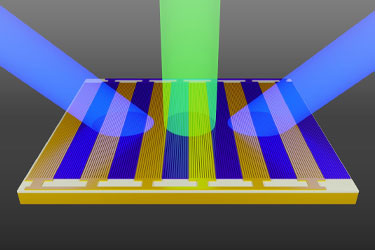Northwestern University's “Dancing Molecule” Therapy: Starting a New Journey in Cartilage Regeneration
The birth of an innovative therapy and breakthrough
In the international scientific research field, a research result of Northwestern University has attracted widespread attention. The team successfully utilized fast-moving “dancing molecules” to repair damaged human cartilage cells, bringing new hope for the treatment of osteoarthritis and other diseases. The injectable therapy was first introduced in November 2021, when it successfully reversed paralysis caused by severe spinal cord injury in mice. Now, the therapy is again showing great potential in the area of cartilage regeneration.
In just four hours, the therapy activated the expression of genes needed to regenerate cartilage. And after just three days, human cells produced the protein components needed for cartilage regeneration. Upon closer examination, the researchers found that the effectiveness of the treatment increased as the movement of the molecules increased. This strongly suggests that molecular “dancing” plays a crucial role in triggering cartilage growth.

Dilemmas and New Hope for Osteoarthritis Treatment
Osteoarthritis is a common degenerative disease that affects many patients worldwide. Over time, joint tissues degenerate. In patients with severe osteoarthritis, the cartilage may become very thin due to wear and tear. Currently, the only effective treatment is usually expensive and invasive joint replacement surgery. However, Northwestern University's “Dancing Molecule” therapy promises to be a breakthrough in this dilemma.
The “dancing molecule” is a synthetic nanofiber assembly consisting of hundreds to hundreds of thousands of molecules. It has strong cell signaling capabilities and can quickly find and correctly bind to cellular receptors. Once inside the body, the Dancing Molecule mimics the extracellular matrix of the surrounding tissues and communicates effectively with the cell by matching the structure of the matrix, mimicking the movement of biomolecules, and integrating bioactive signals from the receptor.
Innovative Research and Experimental Processes
To target receptors for specific proteins critical for cartilage formation and maintenance, the research team developed a new cyclic peptide. This peptide mimics the protein bioactive signaling of transforming growth factor β-1 (TGFb-1). Next, they integrated this peptide into two different molecules. The two molecules interact to form a supramolecular polymer in water, each with the same ability to mimic TGFb-1.
The team designed one supramolecular polymer with a special structure that allowed its molecules to move more freely within the large assembly. The other supramolecular polymer restricts the movement of the molecules. Experimental results showed that after three days, human cells exposed to the more mobile molecular assemblies produced more of the protein components needed for cartilage regeneration. The team concluded that “dancing molecules” containing cyclic peptides that activate the TGFb-1 receptor were even more effective than natural proteins in biological systems for the production of collagen II, a key component of the cartilage matrix.
MORE FROM WIRED

- Innovative Applications of Immersive Technology in the Entertainment Industry

- China's First Medium-Earth Orbit Broadband Communication Satellite Launched: A New Era of Communication Technology Breakthroughs and Commercial Applications

- Apple's fall event: iPhone 16 series makes a stunning debut
- Sep,12,2024

- Space-Time Metasurfaces: Unlocking a New Future for Wireless Communications and Optical Applications
- Sep,05,2024

- Novel RNA Construction Module Enables Efficient Production of High-Density RNA Microarrays
- Aug,30,2024

- Innovative Applications of Drone Technology in Agriculture
- Aug,21,2024

- OpenAI Launches SearchGPT, an Innovative AI Search Engine
- Aug,19,2024